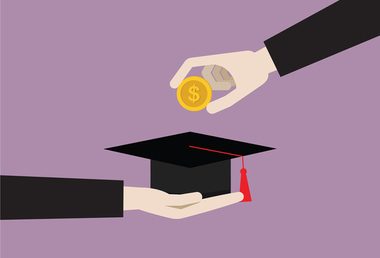The U.S. Department of Education’s COVID-19 relief for student loans has ended. Student loan interest has resumed starting on Sept. 1, 2023, and payments are due starting in October 2023. This means that Federal student loan borrowers will need to start making payments again this month after a three year pause due to the pandemic.
If you have an outstanding loan, you should expect a bill that lays out how much you have to pay each month at least 21 days before your due date. It’s likely that most borrowers have received their bill already, but if you have not, visit your loan servicer account. Interest has started accruing again since September 2023.
If you have not received a bill, you should log in to your StudentAid.gov account and check who your loan servicer is. Many loan servicers changed during the pandemic, so you might have a different one than you did back in March 2020, said Amy Czulada, outreach and advocacy manager at the Student Borrower Protection Center.
 Once you know your loan servicer, you should log into your account to access your student loan balance, monthly payment amount and interest rate. Czulada also recommends that you look at which type of student loan you have. You should also update any personal information that might have changed to make sure you receive all important correspondence.
Once you know your loan servicer, you should log into your account to access your student loan balance, monthly payment amount and interest rate. Czulada also recommends that you look at which type of student loan you have. You should also update any personal information that might have changed to make sure you receive all important correspondence.
If you think you’ll have a hard time making the payments, there are several options:
- President Biden announced this summer that there will be a 12-month grace period to help borrowers who struggle after payments restart. If you don’t resume your payments, you won’t be at risk of default, and it won’t hurt your credit score. However, interest will accrue whether you make payments or not.
- Another option is to see if you qualify for an Income-Driven Repayment Plan. This type of plan sets your monthly student loan payment at an amount that is intended to be affordable based on your income and family size. It takes into account different expenses in your budget. According to Betsy Mayotte, President of The Institute of Student Loan Advisors, it is recommended that those who owe on their student loans research if they qualify for an income-driven repayment plan. Borrowers can use the loan-simulator tool at StudentAid.gov or the one on TISLA’s website to find a payment plan that best fits their needs. The calculators tell you what your monthly payment would be under each available plan, as well as your long-term costs. Generally, your payment amount under an income-driven repayment plan is a percentage of your discretionary income. If your income is low enough, your payment could be $0 per month. If you’d like to repay your federal student loans under an income-driven plan, the first step is to fill out an application through the Federal Student Aid website.
- If you’ve worked for a government agency or a nonprofit, the Public Service Loan Forgiveness Program offers cancellation after 10 years of regular payments, and some income-driven repayment plans cancel the remainder of a borrower’s debt after 20 to 25 years.
Another way to reduce costs is to sign up for automatic payments, whereby the servicer should take a quarter of a percent off your interest rate. You can enroll in automatic payments through your loan servicer’s account. Borrowers who were enrolled in automatic payments prior to the payment pause need to re-enroll again, said Czulada.
Czulada also recommends staying vigilant about scams. You should never have to pay to get help with your loans or to apply for any programs. “The Department of Education will never call you on the phone. So, if you’re getting a phone call that says, ‘Pay $100 now and you’ll get your debt reduced or canceled,’ that’s a red flag that it’s a scammer,” said Czulada.
If you need any assistance with restarting your, or your child’s, student loan re-payments, feel free to reach out to your LMC professional.



